This is one of the most in-depth guides with natural solutions for acid reflux and heartburn. It’s filled to the brim with battle-tested, actionable, no bs tips against acid reflux and heartburn. Copy and save the URL of this page in a document: Bookmark this page. Or even print it out. You’ll be glad you did. Enjoy.
Introduction
“Just when is this stupid burning pain gonna stop?”
“I want to eat pizza again without my stomach acting up.”
“I can’t take it anymore…”
Does any of these thoughts constantly accompany your everyday life? Tenacious heartburn turns most eating pleasures into a blazing nightmare. You’ve been searching for lasting solutions far too long, with a lot of frustration along the way: I hear you. But life doesn’t have to be like this.
I’ve had acid reflux and heartburn for more than 7 years by now, with my fair share of ups and downs. Today, I want to share with you my battle-tested, first hand knowledge and experience in reducing heartburn. By now, I rarely get heartburn and when I do get it, it dies down rather quickly (especially when I use the “remedies” you’ll see down below.)
This guide will show you what to do, what not to do and give you different angles which you can use to tackle the inferno in your stomach and reduce it as much as possible. When I do become completely free of symptoms, I’ll update this article. A good reason to bookmark this in-depth guide, by the way.
First, I will equip you with valuable principles that can guide you forever. Then we’ll be getting to the don’ts, dos and the solutions. With section 9, you’ll get an extra quick summary of what your first steps should be.
With these principles and methods that I’ll show you, I’ve not only been able to reduce my heartburn and reflux, but unintentionally lost incredible 22 pounds after many years of stumbling in the dark. And the pounds still continue to drop, no ups and downs anymore.
NOTE: This guide is based on MY experience and I can’t guarantee that you’ll have the exact same problems and solutions as I. So take this as a “troubleshooting guide”, not a “be all end all” ultimate type of solution.
1. Important: Principles to guide you forever
Good bacteria vs bad bacteria
There’s billions of bacteria in our gut. But not all of them are bad. There are bacteria who we benefit from. And there’s those who cause health problems. As long as the “good bacteria” are the majority, your stomach should be fine. But, unfortunately, for many people in the western world, it’s the other way around: The “bad guy bacteria” are calling the shots in our stomach. The result? Inflammation and all kinds of illnesses and health disorders. But here’s the thing.
We can choose who we invite to our “house”.
So often, we choose to roll out the red carpet for bad bacteria who cause us permanent trouble with their stay. But we can turn the tables around. While it may be easier said than done, it’s possible. Because you not only feed yourself, but also the bacteria in your gut.
Prebiotics and probiotics
Prebiotics are what feed the good bacteria you WANT to have in your stomach. They’re basically fibers that your stomach doesn’t break down, but the bacteria do it for you. There are many kinds of vegetables that give you not only the nutrients your body desperately needs, but also feed the good bacteria you want to keep around in your gut.
The probiotics are the good bacteria you want to have in your stomach. So a good place to start is to include more prebiotics into your diet AND to add probiotics into the mix. (More on this down below.)
Prepare as much food as you can with natural, organic ingredients
There’s always the same problem with industrially produced food: It’s usually made for convenience. But at what cost? Lots of additives that shouldn’t be in food, turning our “food” into hand-sized chemical labs. And these chemical labs are supposed to go into our stomach… Yuck!
That’s why organic or natural ingredients are so important. Later, I’ll also show you some foods that give you nutrients and don’t cost you an arm and a leg (section 6).
Lack of minerals
Our body is doing its best to keep us in balance. That includes the balance between being acidic and basic/alkaline. If our body is too acidic, our body has to strip our bones of some minerals to neutralize the acid storm. This can also lead to osteoporosis, because the bones lack calcium. If the body didn’t use the minerals with this last resort, we’d die form acidosis.
If you fear your body is too acidic, you can support your body by getting good mineral sources. An underrated source to get a good supply of minerals are seaweeds. More on them below.
Acidic vs basic environment
We people in the west tend to be too acidic. A body that’s too acidic opens the floodgates for inflammation and with that, our chances of getting ill rise significantly. That’s because the bad bacteria LOVE the acidic environment: They thrive in it. To them, it feels like you’ve rolled out the red carpet and given them VIP status. And they will enjoy their stay until YOU decide to kick them out.
And we kick them out by turning our body into a more and more alkaline (or basic) environment. The bad guys can’t stand an alkaline environment and hit the road. Like that, you can help the good guys in your gut be the winner, because they’re the majority now.
That’s the idea behind this guide. To show you how to do that. And unlike many people out there, I won’t tell you that “You just need one miracle solution and you’re healthy forever”.
Fully healing your gut takes time
We can’t just snap our fingers and expect that our damaged gut just heals in the blink of an eye. (I would have liked that too, believe me.) Same goes for any products that promise you immediate effects or anything. If it took some time for things to turn sour,they’re unlikely to disappear on the spot, right?
You will feel better. Just remember to be patient with your body. The problems won’t disappear at once. But the earlier we start to do good for our body, the better. Health is a giant, complex puzzle that we need to put together piece by piece. And I’d like to start handing you out some core pieces.
Let’s start with the “boring” (but crucial!) advice.
2. Avoid the firestarters
Please believe me one thing: The solutions you’ll see later on are only half as effective if you don’t even try to avoid the firestarters. When you try to put out a fire, even a little bit of gasoline will ruin your progress. That’s why avoiding the firestarters is the biggest lever you can pull (By “firestarters”, I mean referring to the most likely causes of heartburn.)
I’m aware that it’s boring to simply say “avoid the bad stuff”, but I’d be doing you a massive disservice if I didn’t. I would have liked to tell you that a change in diet is absolutely unnecessary: “Just eat what you want, how much you want”… But that’s not how it works, I’m afraid.
I created this guide to be fair and honest with you, so that you can finally start to feel better and make your life easier. So. here are the biggest “firestarters” I know.
Avoid these like hell to reduce the burden on you and your stomach. Especially in the evening and before going to sleep, so you won’t lose your sleep because of the burning pain.
NOTE: I’m referring to purchased products here. If you’re able to turn the following foods into healthy versions with your own cooking, go ahead. A healthy version would try to get rid of the added sugar and cheese, for example. See if your stomach can handle the healthy versions and act accordingly.
(Heavy) cakes
Cream, TONS of sugar and a lot of fatty butter make cakes a real digestion nightmare for your stomach. Not only are they giving your body empty calories, without any useful nutrients to strengthen body and mind, there’s also things like artificial sweeteners, preservatives and what have you that wage an unholy war against your body.
Sweets in general
Similar to the cake problem: Empty calories and artificial sweeteners and other chemicals that plague your body.
Potato Chips
They contain far too many unsaturated fats, transfats, not to mention a heavy load of calories. And with all that, they don’t even make us full. (Because there’s hardly any nutritional value in them.) Chances are very high that these would cause your symptoms to flare up, because they are tough to digest. Best to avoid completely. Or make your own.
Cheese
It’s very fatty and there’s an important question to ask: Is the cheese even “real”? Or is it artificial cheese, full of disgusting transfats and who knows what? These are artificial fats that your stomach just can’t handle and causes a boatload of problems for your stomach.
Heavy food like Pizza, Lasagna, Burgers…
What do all these happen to have in them, to make them “heavy food”? Cheese. And, if we’re talking purchased, industrially processed products, they also have artificial sweeteners, preservatives and who knows what else in them… If your stomach’s already sensitive, it can’t handle these. That’s why it’s giving us these nasty, burning reactions.
Spicy food and spices
If your stomach is sensitive, eating spicy food and spices like cayenne pepper, chili, and even turmeric and ginger could upset your stomach and make your symptoms worse. Avoid overly spiced and seasoned food as much as possible while healing your condition.
(Carbonated) soft drinks
Once again, they’re filled to the brim with artificial sweeteners and other chemicals that our body doesn’t know what to do with (or desperately tries to get rid of). Just one carbonated drink meant pretty much guaranteed reflux for me and I’ve avoided them for years now.
Smoking
Aside from the fact that nothing good comes out of smoking, it’s also not exactly a treat for your stomach, to put it mildly. It poisons your body, weakens your immune system… The list of problems it causes just doesn’t end. If you smoke, quit it. No matter what other problems you might have, you’ll always be better off without cigarettes in your life. Same goes for your loved ones.
Would you like more honest, no-bs health tips, conveniently delivered to you?
3. Keep watch if these cause your symptoms to flare up: Possible troublemakers
Any of the following substances could trigger or worsen your symptoms; it could also be several of these at once. Consult your dietician or physician to, ideally, exclude which of these are the culprits for your symptoms.
Soy
There’s a huge controversy surrounding soy: Some say it causes cancer, produces “man boobs”, and other stuff. What I found is that you’re ok as long as you stick with the natural soy variants. The less processed, the better. Stuff like tofu, miso and tempeh are fine, as long as you don’t overdo it. What you should stay away from is all the “vegan meat” products, that are just as processed as regular meat, or even worse. I wouldn’t be surprised if some of these “vegan sausages” etc. cause your stomach trouble.
Gluten
Hard to digest. It glues our intestines and lays a film over them, causing all kinds of problems. In the long run, this glue also reduces the amount of vital substances your body can absorb because of that film. Mostly found in industrially processed breads, wraps, cakes, cookies etc. Gluten disappears when you give the baked goods enough time to “rest”. To my knowledge, industrially processed foods “don’t have the time” to do this (due to mass production, profit maximization… you get it): That’s why the gluten remains.
Starch
The “western diet” tends to be heavily loaded with carbs and starchy products. Starch is in the most popular foods many like to eat: rice, potatoes, pasta, bread. It’s tough for our stomach to digest: Most of us should be able to lift a heavy burden off our stomachs by reducing or even eliminating starchy products. The solution would be to add more food variety into our lives. Couscous, Quinoa, Millet and Bulgur are non-starchy alternatives with less carbs and more protein than rice for example. And they allow you to enjoy a lot of different tasty, nutritious meals that are easier on your stomachs.
Meat
While I don’t want to venture too far into this topic, the general state of animal farming is a sad one: They’re herded together on tight space, are fed genetically modified garbage food… And to prevent them from becoming sick, they’re being pumped with antibiotics. And guess who gets to “enjoy” the antibiotics as well as the garbage they’ve been fed? That’s right! The one eating the animals (yes, even if cooked).
And not only does regularly “taking” antibiotics cause them to be weaker and weaker for an actual nasty, bacterial infection: Antibiotics kill the bacteria in our stomach. The bad and the good. On top of that, they make your body more acidic.
Personal recommendation: If you choose meat, go for organic. With organic meat, you at least get the good stuff the cow’s been eating. No matter if it’s the cost or the health aspect… Chances are, most people should cut down on their meat intake per week anyways.
NOTE: The same principle applies to other sources of meat as well: Non-organic means the animals are being fed what’s cheap, not what Mother Nature had in mind for the animals.
Casein (dairy)
There’s a lot of back and forth in the health community about milk. Some say it’s oh so good for your bones, other people are saying it actually robs your bones of the precious calcium they need. Otherwise, it’s the same problems as with the meat: Through the milk, you get exactly what the cow got.
Although it seems to “cool down” the fire in your stomach, I’ve personally found to be better off without milk or cheese. Try cutting down on it and see how you feel. My brother-in-law had a lot of acne, which cleared itself after he stopped consuming dairy entirely. Stuff to think about.
Tomato sauces
I’ve had some surprisingly nasty heartburn surprises just by eating a dish with tomato sauce. I’ve had the worst experience when I added some tomato purée mixed with water to “stretch” the amount of sauce I had available (in case you don’t know tomato purée, it’s basically concentrated tomato juice).
Some people even say that all the “nightshaders” like tomato, eggplant and more cause stomach problems in general. With the tomato example, it seems to be only a problem when they’re cooked, as that’s when they turn from alkaline to sour. I’m not demonizing tomato sauces here, I’m just saying keep your eyes open if they’re what’s causing trouble for your stomach.
4. Feed the good guys: Prebiotics
Raw veggies
Nibbling at carrots and cucumbers directly reduced my heartburn. You can use them as a smoothie base to create healthy and tasty smoothie recipes (More on smoothie recipes below). Tip: Ever tried putting the upper green part of a carrot in a blender, to make a smoothie out of it? (Yes, the part of the carrot we always throw away.) Can’t hurt to rinse it in water before you put it in a blender. Smells a little like parsley, if you ask me.
Asparagus
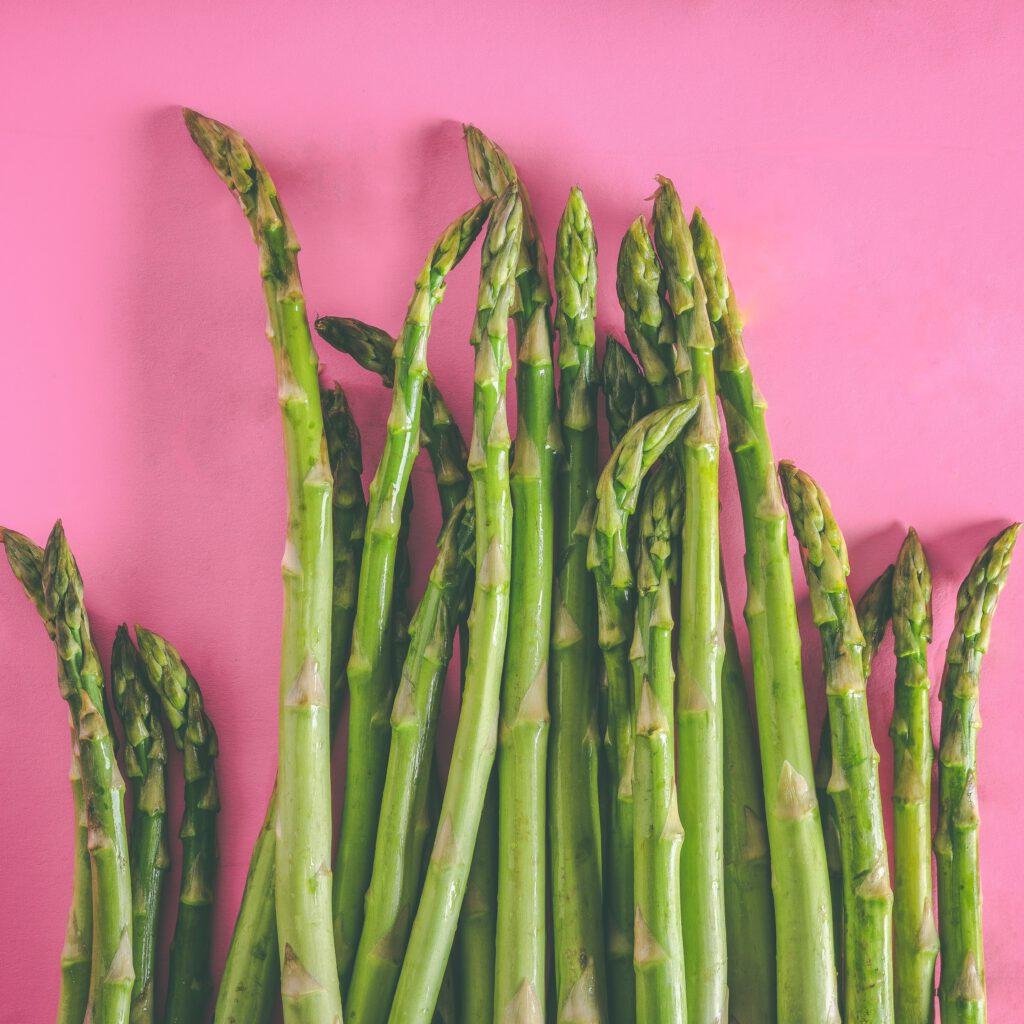
Like most plants, asparagus comes with little calories and a lot of prebiotics. It’s easy to include in a lot of dishes and helps you lose weight, while being friendly to your stomach. An overlooked vegetable in my opinion.
Dandelion Greens

Yes, the green parts of this plant are edible. Not only are they edible, they’re a super healthy choice for your prebiotic intake. You can chop the greens into your salads or use them for your smoothies. Maybe you can even find some “wild” dandelion in the area you live?
Flaxseeds
Flaxseeds are a healthy addition to your drinks, breakfast cereals, you name it. They contain a lot of fiber (the prebiotics), and help your digestion. Beware to not eat too many of these at once, as flaxseeds can “accelerate your business” in the bathroom. This is not something bad in itself, but I wanted to tell you this. Go for the crushed (or ground) flax seeds: These are easier to digest.
Tip: To make them more digestible, try to soak them in water before using them. Same goes for other seeds, like chia seeds.
Oat
One of the best bases for your breakfast cereals. They contain a lot of fiber, support your digestion and make you full: Something that helps people like me who have troubles curbing their appetite.
Personal tip: If you’re looking to make this a breakfast staple, try experimenting with plant-based drinks like almond or oat instead of milk. Or even better: make your own plant-based drinks! The internet bursts with delicious recipes for these and it’s easier than you think. The reward is something healthy, that helps keep you full and like that, even lose weight after some time.
Barley
Barley is a grain that mankind has known since ancient times. But nowadays, only few people know this healthy grain. Soak it before using it to help your body absorb the nutrients better. Like the other prebiotics on this list, it contains a good number of minerals, vitamins, a lot of fiber while only having a relatively small amount of calories (See a pattern?)
Algae/seaweeds
Algae also serve as prebiotics. BIG recommendation. Not only for prebiotics, but also for other purposes. More on them in section 6.
Want more natural substances that make you feel better overall? Get my daily no-bs emails on how to improve your health and how you feel.
5. Recruit the good guys: Probiotics
Sauerkraut
I know this is serving clichés, but I think that Sauerkraut is one of the reasons why the health of people here in Germany is not as bad as it could be (To my surprise, other countries like France and even the US like to eat it; as a topping on hot dogs.. I used to think Sauerkraut was only a “German” thing.)
Like any of the following, Sauerkraut is a fermented product. During this process, healthy bacteria “gather” in the food, so we can get the good bacteria into our digestive system.
If possible, go for raw sauerkraut, because you’re eating it for the bacteria: But if the sauerkraut was heated up, the important bacteria and enzymes are killed off. A super tasty and healthy addition to your foods, as a side dish, but I also like to eat it raw, on its own.
Kefir
Kefir grains are no actual “grains”: They’re cultures of stomach-friendly bacteria. There’s milk-based Kefir, where the kefir “grains” are added to whatever milk product. But there is also water-based kefir: It’s healthy for your gut and you can even make it easily at home. All you need is sugar, water and the kefir grains. Research has shown that kefir may contain more than 40 different kinds of good bacteria.
Between conventional yoghurt and kefir, I’d go for kefir. With the water-based kefir, you can even avoid the dairy type of kefir, which makes it a solid probiotic for the stomach. Start with a lower dosage, see how your body reacts and work your way up slowly.
Miso
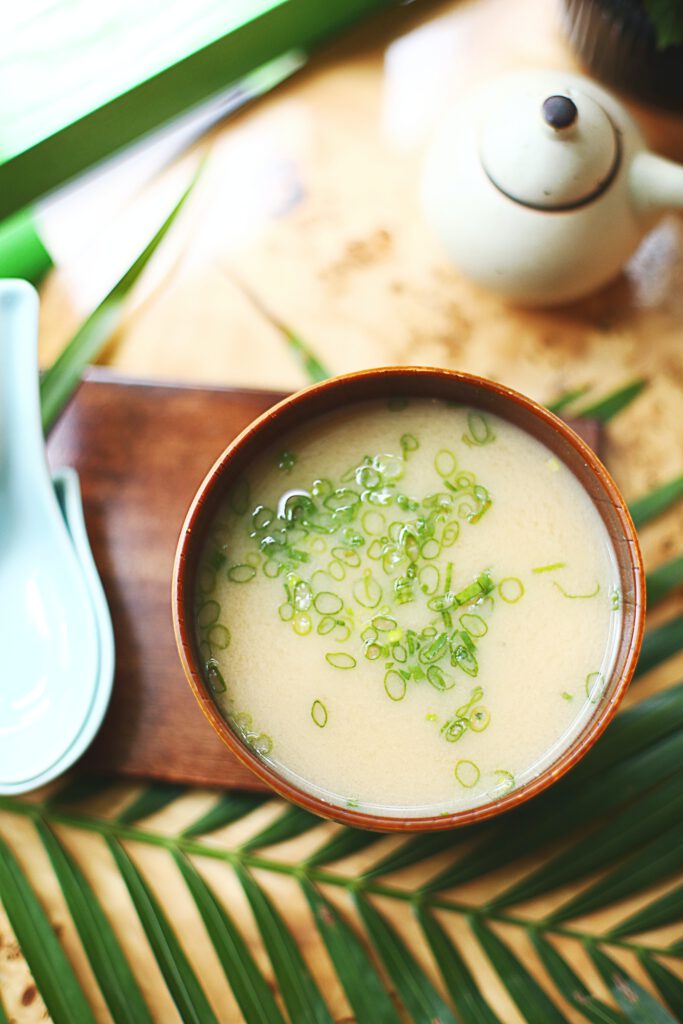
Miso is a mushroom-based paste that is a staple in a certain kind of Japanese soup: the miso soup. While there’s a variety of colors, my wife and I like to use the red miso paste for miso soup. It’s a light, healthy alternative to all the dairy products that are probiotic, but might cause their own problems. Makes for an awesome and light evening meal, with some leek sprinkled in it.
Natto
Like Miso, Natto is a fermented product. It might not be for everyone, but it’s good to know probiotic alternatives to dairy products, as these might be co-responsible for your stomach problems. Natto has a certain smell and texture about it, which might make it not as “attractive” as other foods, but it is a fermented product that gives your stomach probiotics.
Kombucha
Kombucha is a healthy tea with probiotic cultures in it. Depending on the tea you use as a base to prepare kombucha, you’re getting the different health benefits of the tea used and the good bacteria. Like the water kefir, you can make your own. There’s not too much research on kombucha, but it’s been used in Asia for around 2.000 years and some people call it the “Tea of Immortality.” Can’t hurt to have a tea like that on your radar, can it?
Kimchi
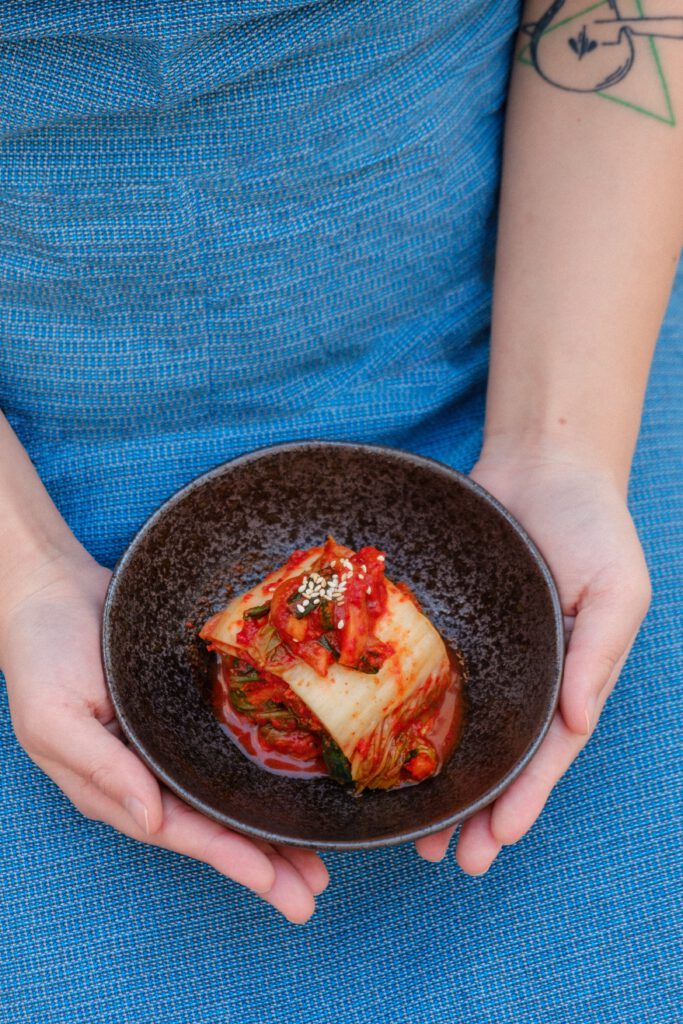
This one might be a little tricky, if your stomach is sensitive with spicy foods. But I definitely wanted to tell you about it since it’s a fermented product and I personally love this to spice up asian dishes. You can put it in almost any asian dish, be it with rice or sitr-fry noodles with veggies. And if you can “stomach” it, it’s a really good, heathy choice for your diet.
6. Solutions for a more basic environment in your body
Algae/Seaweeds
If you take away one thing from this guide, let it be this: Include at the least one of the following seaweeds into your life (preferably spirulina and/or chlorella) while cutting down on the “firestarters” from section 2. Algae are amazing: They are mostly unaffected by our “smart” industrial processing methods and have a lot of critical nutrients for us. But because they do absorb anything from the environment, make sure to buy certified organic: Make sure the source is as natural as possible. There’s a lot of good sites online that ship seaweeds.
In terms of nutrition, the three following seaweeds are similarly good. They’re one of the best sources for minerals, which we desperately need, contain a wide range of vitamins, including even vitamin D. The three following are some of the most known algae. All three are good choices, but try to include more of spirulina or chlorella.
Nori
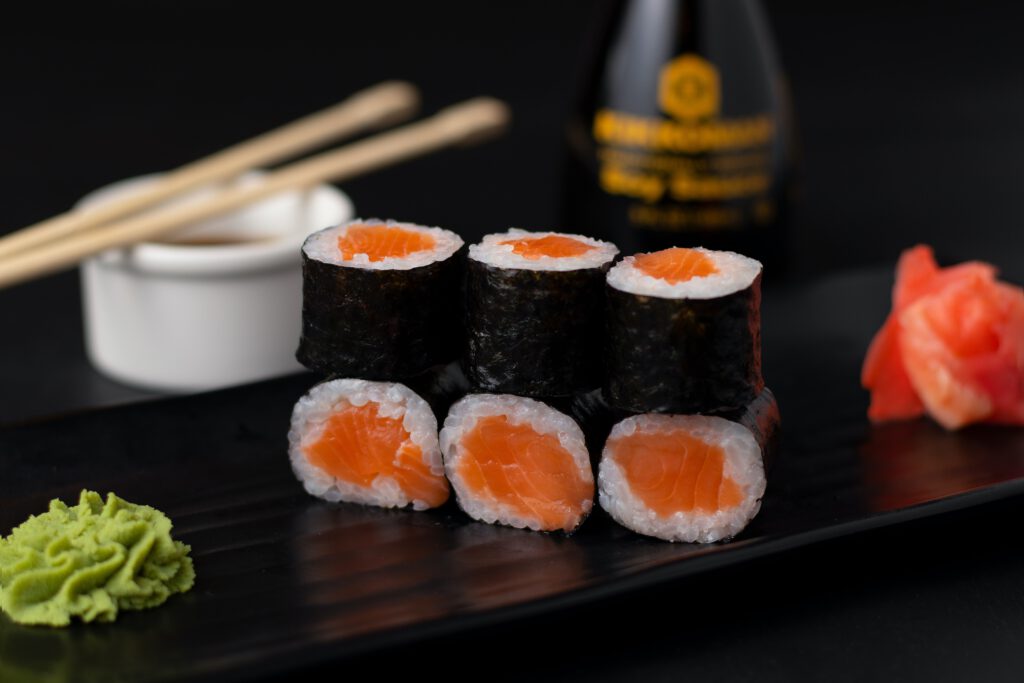
If you ever ate sushi, then you know what Nori tastes like. It’s the green wrapping around the sushi and it’s actually the healthiest part about sushi (yes, healthier than the fish or filling.) You’d be shocked how much good stuff seaweeds have in store for us: Nori offers vitamins A, B, C, D, E and K, a lot of minerals, iodine and a lot of fiber and protein, while giving you only few calories. You can also buy nori leaves and sprinkle some shredded nori right before serving your meal.
Spirulina
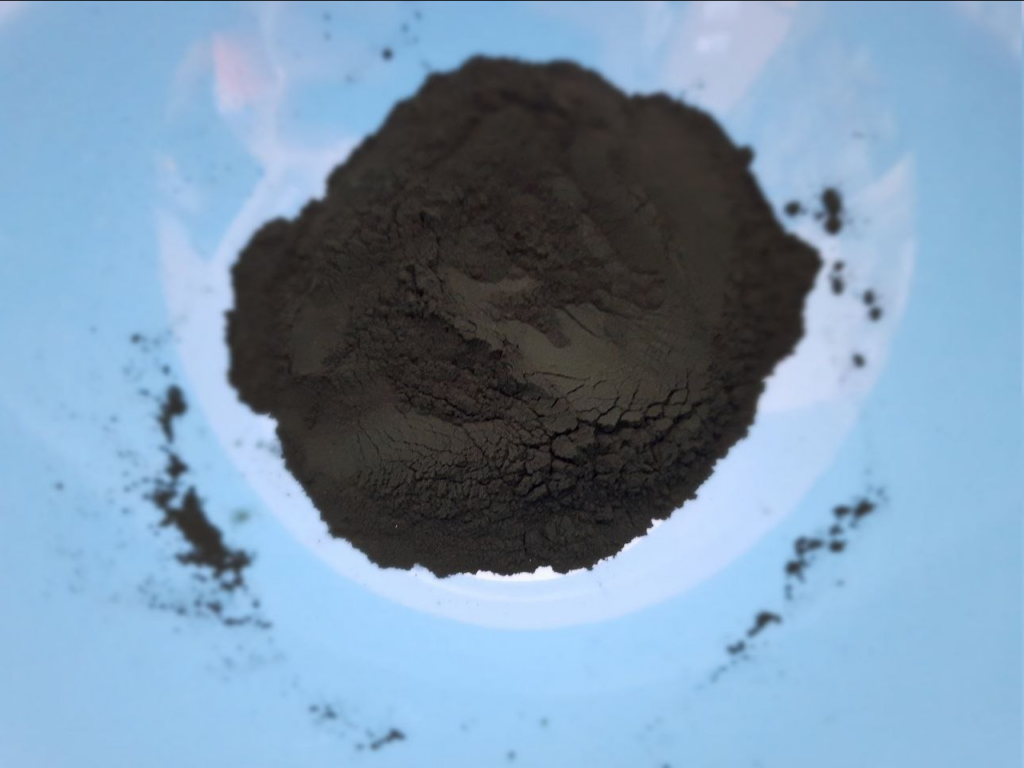
Not only has spirulina an almost shocking amount of protein for “just a plant”, it also offers you precious minerals. It even includes vitamin B12 (you know, the vitamin B12 that, according to some ‘health experts’, you can only find in meat). But this alga has even more to offer: It actually contains another “impossible to find” vitamin: D3. Many people recommend you to supplement this vitamin (rightfully so). Make spirulina a staple in your diet and see the good it does for your body. Below, I’ll show you what to combine this with, to get a real improvised “fire extinguisher” for your heartburn.
Chlorella
Very similar profile to spirulina above: Ridiculous amount of minerals, vitamin B12 and vitamin D2. Include either spirulina or chlorella into your life. (Or, if you want to go the extra mile, even both: Can’t hurt.)
When I take chlorella tablets, I tend to take 2-4 per day. They tend to be somewhat “lower dosed”, but you can also check if you can pulverize the green tablets into powder. Choice is yours.
Dates
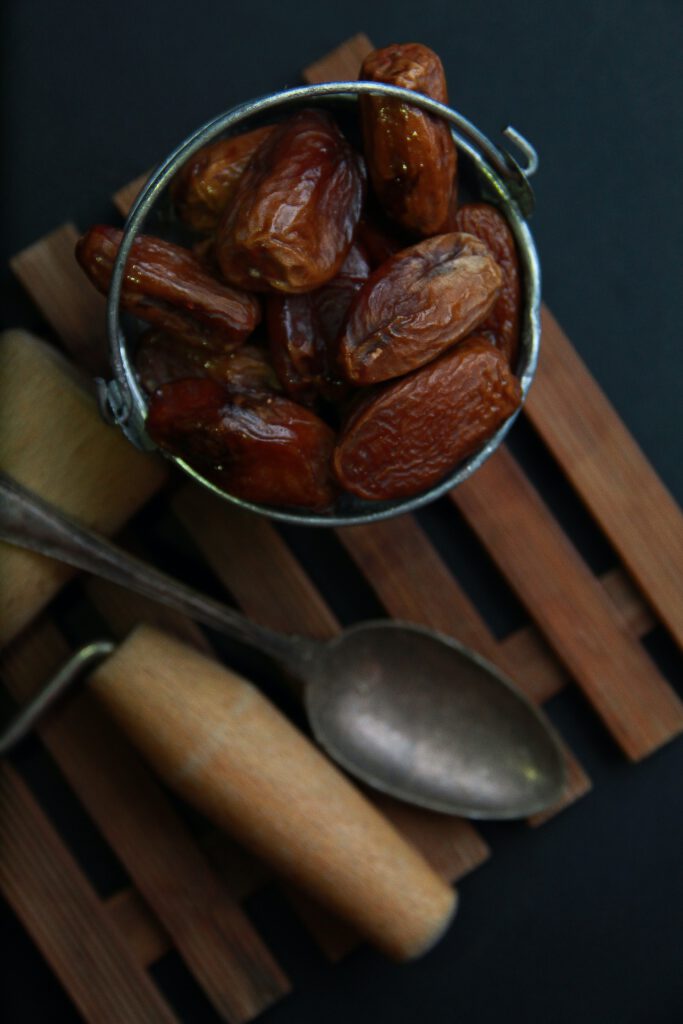
They’re my go-to snack. I LOVE them! Offer a lot of potassium, taste like heaven and you can also use them to sweeten up your smoothies. On that note, make extra sure your blender can handle the dates or it might break, especially if they still might have their stones in them! The sugar from things like fruit or dates is always better: because of the fiber it doesn’t enter the bloodstream directly. This means you don’t get those nasty sugar spikes and crashes, as you would with artificially added sugar.
Papaya
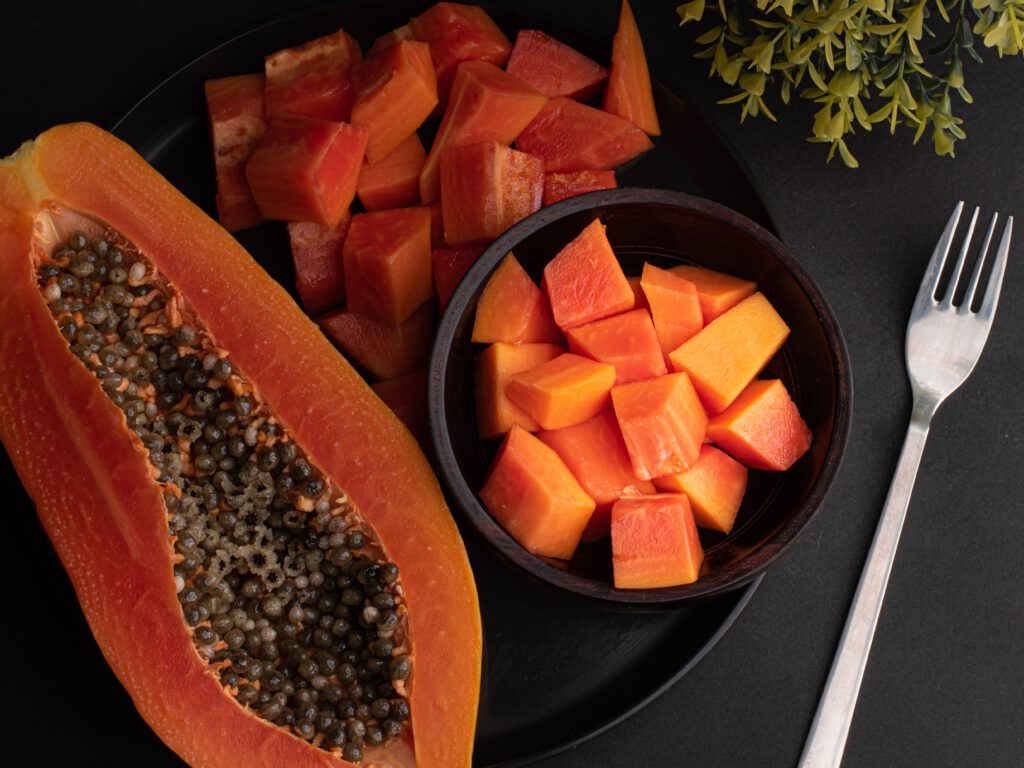
Papaya supports our gut flora, helps protect our cells from free radicals, is anti-inflammatory and boosts our immune system. And as if all this wasn’t enough, it also has detoxifying properties and is even able to protect the tree it grows on from “invaders” like bacteria, fungi and worms. It does the same for us.
Important to know: There are tribes that have actually used Papaya as a means for abortion. That means women should be rather careful and avoid Papaya completely if they’re pregnant. Luckily, there’s a lot of other healthy solutions available out there.
Aloe Vera
Mostly known for its healing properties on the skin, it’s also healthy inside your body. It’s not only able to give a cooling effect to your skin, but also to your stomach. Ideally, look for the entire plant and use the leaves in a delicious raw-food smoothie.
Apple Cider Vinegar
Put 1 tablespoon of this into a glass of water before you have breakfast. Do this for a couple of days and see how it makes you feel. Even if it doesn’t taste exactly delicious like this, it’ll be worth it.
(Virgin) Coconut Oil
Coconut oil is alkaline and will help you if your body is acidic. Also it kills off some bad bacteria strains in your gut and has detoxifying properties. If you can, try to get natural, virgin coconut oil (like “virgin” olive oil). Also, you’d be shocked at how many uses coconut oil has: You can use it as a natural “skin cream” on age spots, as a grease for door hinges, bike chains, furniture polish… BIG recommendation. Feel free to do your own research on further uses!
Honey
Honey is very healthy as it has a lot of nutrients, but it also helps calm down our stomach. Use it to replace industry sugar whenever you can. If you’re sensitive to sugar in general, don’t overdo it. If you can, go for raw honey.
Baking soda (acute solution)
A handy, acute solution is baking soda. You can easily dissolve it in a cup of water and drink it to douse the flames in your stomach. (Baking soda also has a lot of other useful applications in your home.) While baking soda is a solid acute solution, the ones that follow below are a lot better.
You see, once my heartburn “catches fire”, it just won’t stop anymore. This is especially annoying at night. But there’s one drink that actually reduced my heartburn drastically, on the spot, even when it was fully blazing. And it works even better than the raw carrot or cucumber! It gave me results I didn’t believe possible anymore.
If you want to finally read about stuff that just works… Get my daily emails here if you haven’t already.
7. Acute help: Three super healthy, tasty inspirations
Recipe no.1: 1 cup Almond drink + 1 tsp spirulina + 1 quarter tsp ashwagandha + 1 tsp honey
With this combination, the spirulina alga “pulls most of the weight”. It’s clearly alkaline and has lots of nutrients in it. Ashwagandha is a plant that’s been used in Ayurvedic medicine for thousands of years and helps you relieve stress and sleep better. If you don’t like almond drinks, feel free to experiment on your own to see what drinks to combine these with.
Just mix with a spoon and you’re good to go.
Two tips:
- You will most likely need some sweetening, until you’re somewhat used to the taste.
- Use a rather big cup or glass, so the powders can dissolve better, instead of leaving powder clumps behind (I don’t mind them.) Or you’d have to take less of the powders to prevent clumping. OR you try putting it all in a blender: The choice is yours.
Have fun running experiments with this and gettting it to suit your taste. Try to keep the ingredients as natural as possible. The next drink is a better example for this. (I use the next one as my “breakfast” since a couple of months, to reduce calorie intake.)
Recipe no.2: 1 Banana + enough water to fill up your blender container + 1 tsp spirulina powder + 1 tsp moringa powder + 1 tsp wheatgrass powder
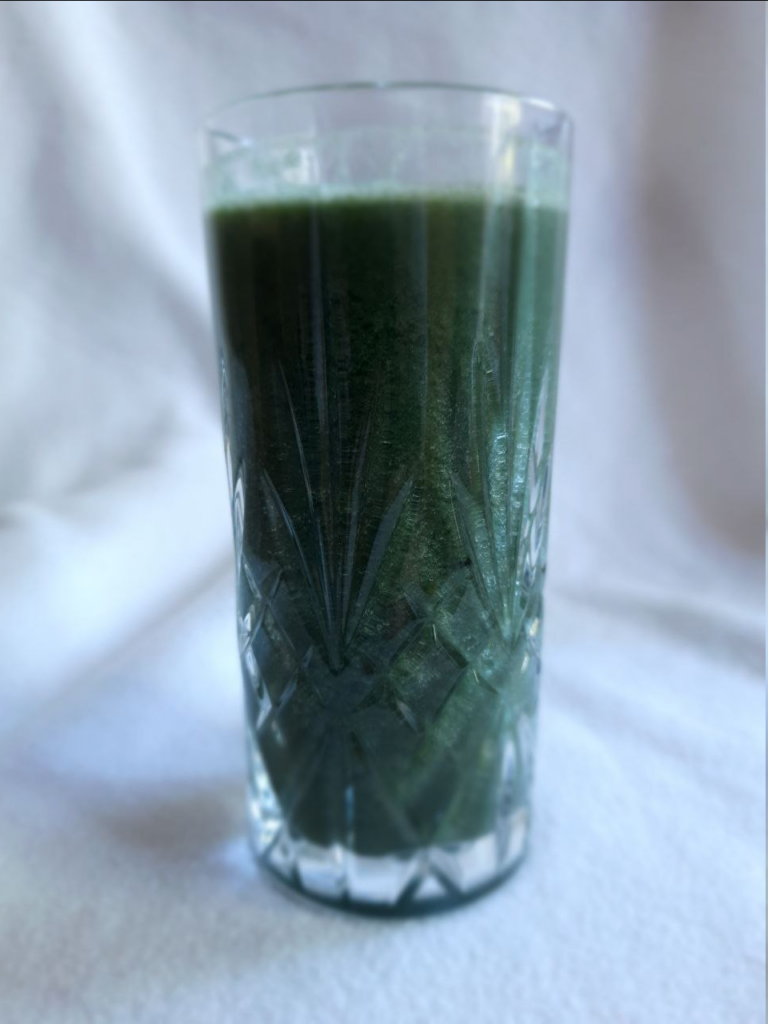
Put these into a blender and you might be surprised how tasty the smoothie actually is. This tastes better than you might think at first. And you can really make this your own smoothie: Use this as a starting point and change and mix to your own taste.
I personally love the smoothies which have some fruit or vegetable as a “base ingredient”. There’s also a variety of natural sweeteners like stevia, honey, maple syrup, date sirup or coconut sirup. But even if they’re natural sources of sugar, please don’t overdo it.
Another healthy breakfast tip:
Recipe no.3: Apple pulp (it’s like apple sauce, but without added sugar) + 4 – 6 dates + (1 tsp spirulina powder) + (honey for taste)

This is an awesome, yet light breakfast that fills you more than you’d think (Especially if you decide to add the powder and honey). It’s an awesome opportunity to mix with your favorite plant powders. Some of my favorites are spirulina, moringa and wheatgrass.
These three inspirations should help you keep the acid reflux at bay in general, and provide acute help against the inferno. But still, don’t overdo it with the honey. or other sweeteners: Sweet fruits like banana or apples should provide enough taste.
Try one of these three recipes after waking up and see how it makes your stomach feel.
Should you experience heavy symptoms in the evening or at night, douse the flames with one of the two drinks.
Want even more tasty, “douse the flame” recipes? Subscribe below to get daily emails on health.
8. “Dry” but important tips to alleviate heartburn:
Don’t go for heavy evening meals. Eat as little as possible at evening
Digesting is one of the most demanding tasks our body has to do. Especially if it’s heavy food that’s typical for the western world. Everything I’ve read on this completely matches my personal experience: Eat heavy in the evening and your body punishes you with nasty heartburn and sloppy sleep. (And yes, the famous “midnight snack” means complete disaster!)
Try to eat before 7 PM and keep it as light as possible, like a salad or just a nutritious smoothie even. You’ll find that you’ll be able to sleep a lot better.
Chew thoroughly, eat more slowly
Yes, I know it sounds lame. But especially if you end up eating something your stomach can’t digest easily, this will take some burden of your stomach because it will need less stomach acid to digest the food. Our stomach acid is just not made to digest entire chunks of unchewed food. Aim to chew at the least twenty times each bite, to ease the burden on your stomach. You’ll end up enjoying your food a lot more.
Sleep in an upright position
When you sleep, try to sleep in a more upright position, so that gravity keeps most of your stomach acid down, where it belongs.
Avoid bending over after meals
This may sound super obvious. But if you’ve ever bent over after a heavy meal, you know what I’m talking about. Don’t give your stomach acid the chance to make its way to the top.
People who’ve read this far have also…
Subscribed to my Tasty ‘n’ Lazy Newsletter.
9. Super-Summary: Most important first steps
1. Reduce the firestarters in your life as much as you possibly can (section 2).
2. Add spirulina and/or chlorella into your daily diet (section 6).
3. Try out the recipes in section 7, especially recipe no.1 &2 if you currently have heartburn.
4. Add as many of the substances from 4.-6. into your daily diet. Start with spirulina or chlorella: The seaweeds already count as prebiotics.
5. Pay attention to your eating habits, when you eat, how slowly you eat (section 8).
6. Go natural with as much of the food you consume as possible, no matter if it’s drinks, food or plant powders.
Last thoughts
Like I said earlier, health is a big puzzle.
If one thing doesn’t work: keep going.
That’s why this guide gives you different angles to “attack” from.
Get additional support from your physician or dietician.
And walk towards your goal one step at a time, depending on how many of the tips you can implement at once.
You WILL be rewarded.
Do you know someone who suffers from heartburn, acid reflux?
Then share this article with them and you just might become their hero.
I’d be really happy if you tried out as much as possible from this guide and if the things I laid out are helping you.
If so, I’d be excited to hear from you. Just shoot me a quick email, to: tommy@yinandyangmethod.com. Of course, you could also subscribe to my newsletter down below if you haven’t done so already.
Because I read all the email I get from my readers and I do my best to reply to many of them as possible.
Thanks a lot for reading this.
Here’s to your health,
Tomislav Winkler
P.S. In a world, where so many of the “health experts” seem only to be interested in making a quick buck out of you, by telling you bs advice, like…
“Eat whatever you want, you’ll still burn fat like a snowball in a furnace in hell”
or
“THIS is the holy grail of health, you need nothing else!”
or
“I’ve got a PhD, so listen to me.”
…YOU alone have the choice: Do you want to follow the “sexy” advice, that promises all the “too good to be true” results, but ends up delivering nothing to you?
Or do you follow the “unsexy”, but proven path that actually allows you to change your life for the better, with lasting results, living longer and in better health even? (At the same time showing you that the “unsexy path” can be filled iwth natural, divine and tasty foods and drinks.)
And that “unsexy” advice comes from someone who can proudly say that he has your best health at interest (Aka, me).
I may not hold the key to “ultimate health” or the “absolute truth”…
But I want to cover your back in a world of greedy, backstabbing, lying-through-their-teeth “experts”.
Why?
Because I wish I had someone like that when I was suffering from my poor health.
Someone to light your path towards the health and life we both know you deserve.
But with so much bs information going arond, it’s no wonder that so many people stay trapped in the “health labyrinth.”
I’m with you on this journey to better health, all the way.
Also, being healthy doesn’t have to be “unsexy” at all: There’s so many ways to make the natural goods taste way better than the processed stuff.
And you’ll feel so much better.
Come join me and I’ll show you all the things that made my life better and healthier.
You’ll be glad you did.